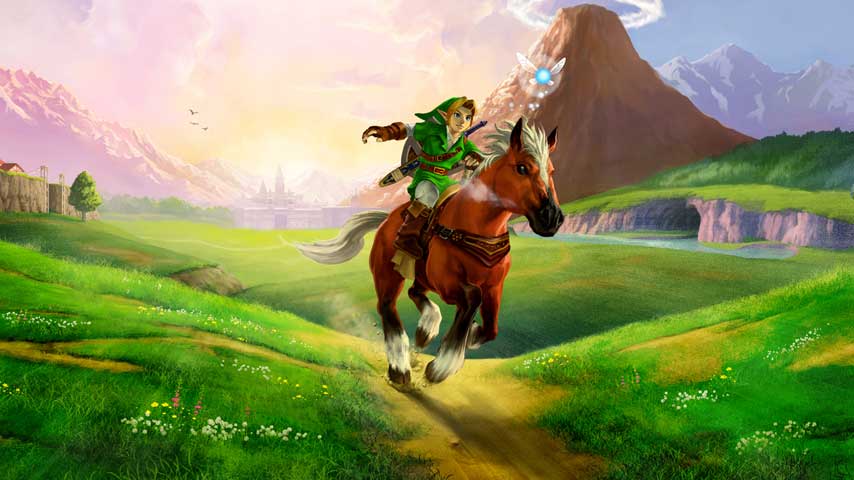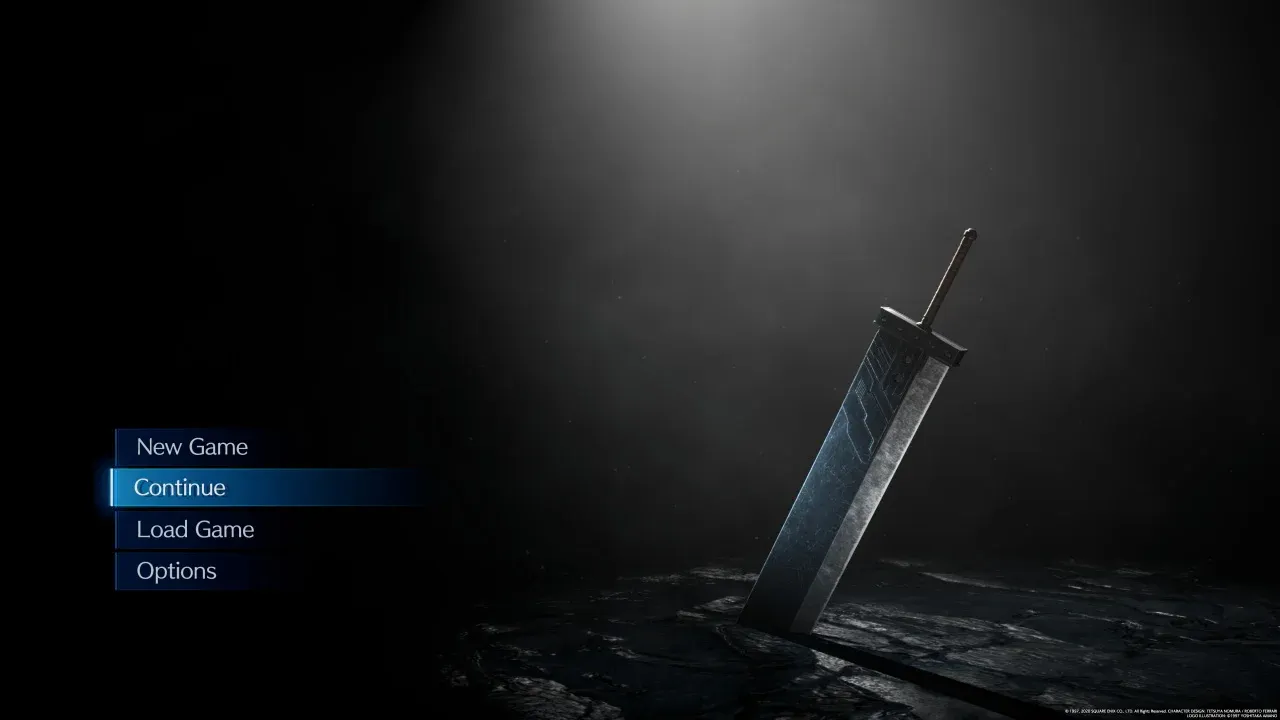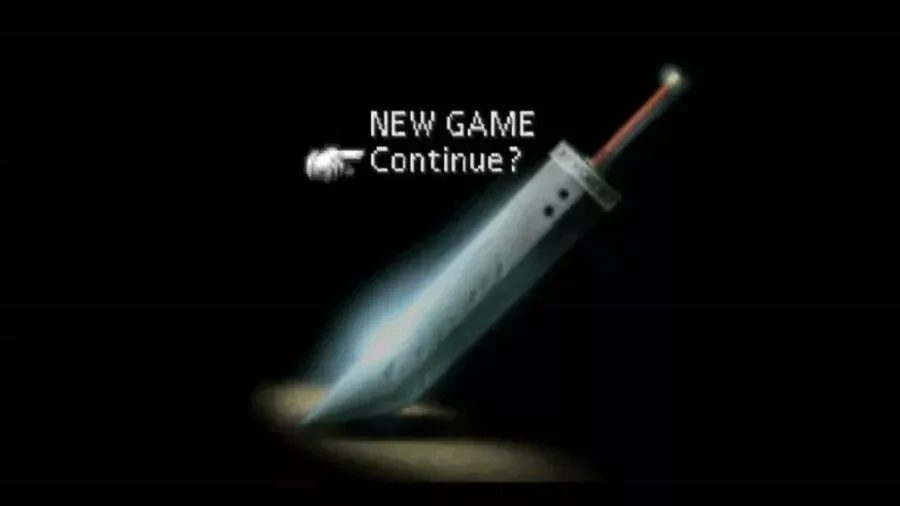The Understated Beauty of the Title Screen
Title screens can set the mood and expectations of a game from the first moment

When someone talks about a game they enjoy, they usually mean the experience of playing it more than anything else. That almost seems redundant to say, but there's a lot more going on than many consciously notice. One of the first things you ever encounter in a game is far more impactful than many actually realise, and that is the humble title screen.
For many, it's the part of the game that you rush through to get to the good stuff. But title screens can often be just as memorable as the game itself, and do a lot of the heavy lifting when preparing you for the game you're about to experience. Like a book cover, the title screen is the first thing you'll see and probably the last thing you see as you finish the game and return to the beginning. Throughout this piece, I'll explore some of the very best (and some of the very worst) title screens across some of the most discussed games in the industry.

If there's one franchise that has a pedigree for intensely memorable openings, it has to be The Legend of Zelda. The iconic series that many hold close to their hearts also has a history of striking title screens that invite you into a world of fantastical adventure. This began with the original The Legend of Zelda: Ocarina of Time for the Nintendo64 in 1998. Since releasing 25 years ago, many hold this adventure as one of the most definitive video game experiences of all time. And it begins with a quiet piano piece as you see Link riding across Hyrule Field on horseback in the night. This perfectly captures the sense of adventure that will keep you going throughout your time-travelling quest to save Hyrule.
Twilight Princess maintains this trend and arguably outdoes its predecessor as it once again combines striking visuals and music before ending on the iconic shot of Wolf Link howling into the twilight on the sombre theme of the game. Nintendo knew that this game was going to be something special and treated players to that even before they picked up the controller. In truth, I could slowly whittle my way down the list of Zelda games one by one and explain how each game creates an amazing atmosphere, but instead, I want to jump forward to Breath of the Wild, Zelda's so-called magnum opus.

Despite this pedigree in the wider gaming landscape, Breath of the Wild opts for an exceptionally minimalist approach to its menus, especially the title screen. Instead of a pre-made atmospheric cutscene of the landscape and some ambient music, the player is given an effective slideshow of promotional art that was released before the game. While this art is pretty, it barely holds a candle to the impactful openings of Zelda games prior. A quiet title screen fits Breath of the Wild like a glove thanks to a far greater emphasis on ambiance and atmosphere when comparing it to a game like Ocarina of Time or Twilight Princess but I can't help but feel there was more to be done here. Surely, there has to be a 3rd bowl of porridge here, where quiet atmospheric music can meet with interesting and striking visuals? Games like Sonic Frontiers copy this style of the weirdly-absent title screen, and it never makes for a satisfying experience, especially for a game as kinetic as Sonic.

Enter the role-playing genre, filled with games renowned for engaging and emotional narrative journeys that stick with players for generations. They also have title screens down to an art too! Games like Final Fantasy 7 (and the remake) make use of simple imagery to invite players into their worlds. Final Fantasy 7 features the iconic Buster Sword alongside a rendition of the ever-familiar Final Fantasy prelude. The inclusion of this iconic track helps to reassure players that despite how different this game is in comparison with its predecessors, it's still the same franchise they have known and loved.
Final Fantasy 7 marked a watershed moment for a franchise that largely stuck to tradition for the majority of its games up to that point. The development team knew there might be some anxiety about this jump from rich medieval fantasy into a sci-fi setting that would alienate existing fans. This familiar title screen does the heavy lifting of reassuring and relieving those anxieties for returning players.


Source: Square-Enix.
This tradition of basic but quietly impactful title screens is a hallmark of Square Enix RPGS as a whole by this point. The rest of the Final Fantasy series, NieR, and Kingdom Hearts are all examples of games that achieve an outsized result through smart use of their materials to make the game feel impactful before even getting out of the starting gate. But this template of the title screen can be seen far beyond just Square Enix.
Games like The Last of Us Part I and Part II employ a similarly subdued title screen to help ready players for a heavier experience that will challenge players in terms of gameplay as well as emotionally. A game like The Last of Us having a loud and bombastic score for its opener would create a real sense of disconnect for a player and would do more harm than good.

And it's this disconnect that underpins every small decision that goes into an effective title screen. A game like Super Mario World is able to have a pre-recorded video of the titular plumber running around because the game wants to get you excited to jump around and copy Mario. A game on the same system, like Super Metroid, presents players with a far more gloomy and serious image at the appearance of a destroyed lab, preparing players for a game that will be quieter and unknown when compared to the bubbly mood of Super Mario World.

Another, more recent, trend is the idea of a seamless transition from title screen into the gameplay experience. Games like 2018's God of War reboot as well as the sequel God of War: Ragnorök have title screens that lead directly into a new game. Neither have a particularly striking image that summarises the game, but they serve to start a player "in media res" to kick off the pace as fast as possible. For narrative-focused games like this pair, the smooth transition into gameplay helps to ease a player into the story. Games like No More Heroes also dabble in the interactive title screen, but the whole UI experience of Suda 51's games is something to pick apart in a while other article.
Bayonetta Origins: Cereza and the Lost Demon also plays with this immersive title screen. With how most of the narrative is explored through the lens of a storybook, the game opens with the player quite literally opening the storybook and starting the game. It seems a very appropriate and charming way of opening a game that's so focused around a fairytale aesthetic.

Some games also reflect the player's progress in the title screen. Xenoblade Chronicles 2 opens for the first time on a dark stormy sky, transitioning directly into the opening but then changes its title screen throughout the game to reflect your massive journey across the world. Lots of RPGs make use of this strategy in order to help express how long these journeys are.
It would be easy to keep on going through different title screens from the games I absolutely love; Super Mario Galaxy has a massively atmospheric opening that sets you up for a grand adventure beyond the Mushroom Kingdom and into the worlds beyond, while the classic Super Mario 64 has a far more interactable title screen with Mario's face, setting you up for a sillier, more light-hearted adventure from the outset. But it's clear from these examples that there's far more that goes into a fantastic title screen than you might think.
For every Ocarina of Time and Final Fantasy 7, there stands an equally uninspired Breath of the Wild and Sonic Frontiers. The title screen might seem small, but it's the very small things that sometimes have the biggest impact on our first experiences.
